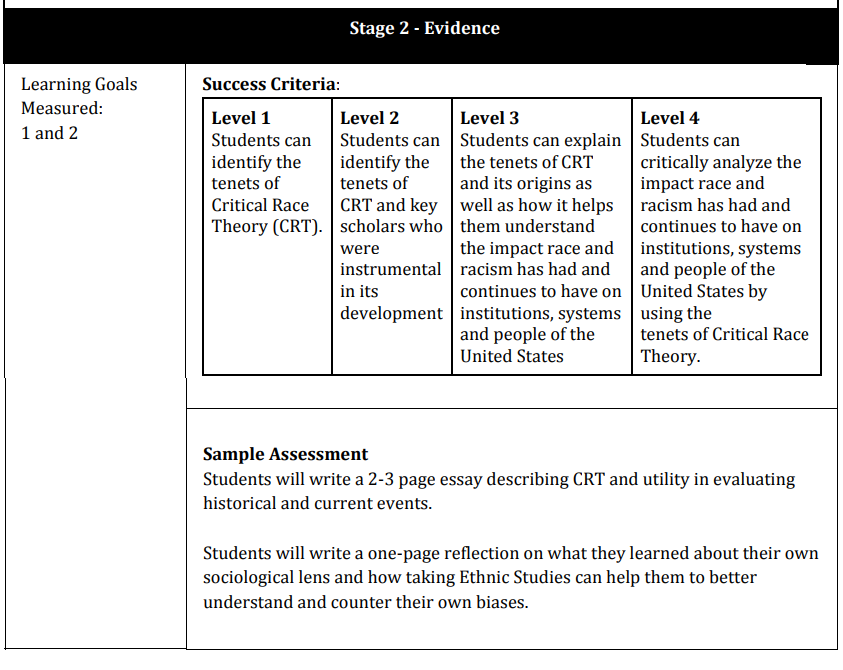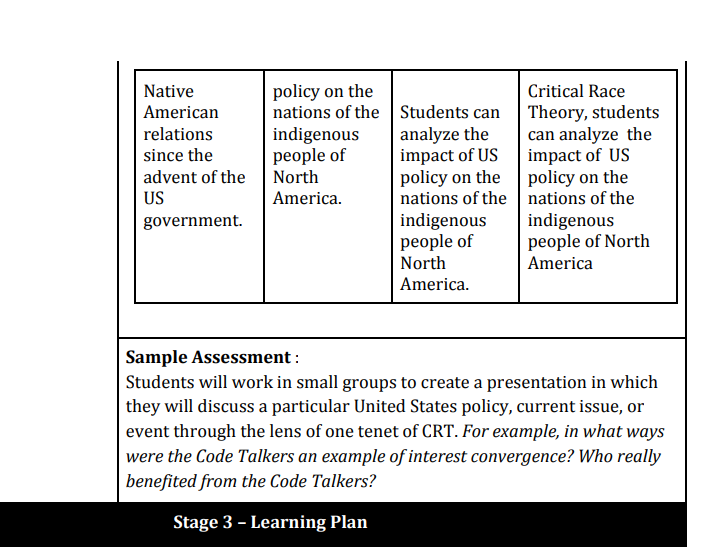
Tamalpais Union High School District ethnic studies course teaches students “the tenets of critical race theory” and how to use it to analyze historical and current events
Incidents
Tamalpais Union High School District’s course for grades 10-12 titled “Ethnic Studies: An Examination of Race in the United States” unit 1 learning goals include that “Students will know the tenets of Critical Race Theory” and will “understand their own racial identity and how it impacts the way they experience the world and interpret information.”
The course goal is “for students to identify and understand why social inequalities in the U.S. persist and how these inequalities are distributed across racial lines.”
Unit 1 of the course framework focuses on ethnic studies and its “Theoretical Framework.” The unit’s “Established Learning Goals” include students knowing “the tenets of Critical Race Theory” and understanding their own “racial identity and how it impacts the way they experience the world.” From the unit, students will “know what implicit and explicit bias are and how they develop” and students will also “understand the role ethnocentrism and racism play in our individual experiences in the United States.”
Critical race theory is introduced in the first unit and “how this concept framework will be used to assess and analyze historical and current events, systems, laws and policies.” Students will apply “different perspectives, or lenses, when researching and discussing issues” which will include “race and racism, oppression, popular resistance and response to oppression laws and practices.”
The unit “Success Criteria” includes four levels ranging from identifying critical race theory to students being able to “critically analyze the impact race and racism has had and continues to have on institutions, systems and people of the United States by using the tenets of Critical Race Theory.”
A sample assessment is provided such as a 2-3 page essay “describing CRT and utility in evaluating historical and current events.”

As part of the learning plan, students will read in small groups excerpts from books such as Paulo Freire’s Pedagogy of the Oppressed.
Unit 2 of the course has students looking at “First Nations: Indigenous People of the Americas” with an emphasis on “learning to analyze racial bias in government policies and practices.” The “Level 4” success criteria requires that using a “tenet of Critical Race Theory, students can analyze the impact of US policy on the nations of the indigenous people of North America.” The sample assessment calls upon students to create a presentation using the “lens of one tenet of CRT.” The sample question asks students to describe why Code Talkers is “an example of interest convergence.”

The fourth unit of the course, African American Peoples Experiences in the US, seeks for students to “understand that the institution of slavery is inextricable from the development of the US as a nation.” An essential question for the unit states “Given the “self‐evident truths” included in the Declaration of Independence, how did the founding fathers justify slavery?”

Instructional materials for the course include Derrick Bell’s Who’s afraid of Critical Race Theory, Paulo Freire’s Pedagogy of the Oppressed, and Glenn Singleton’s Courageous conversations about race.
Stay Informed
